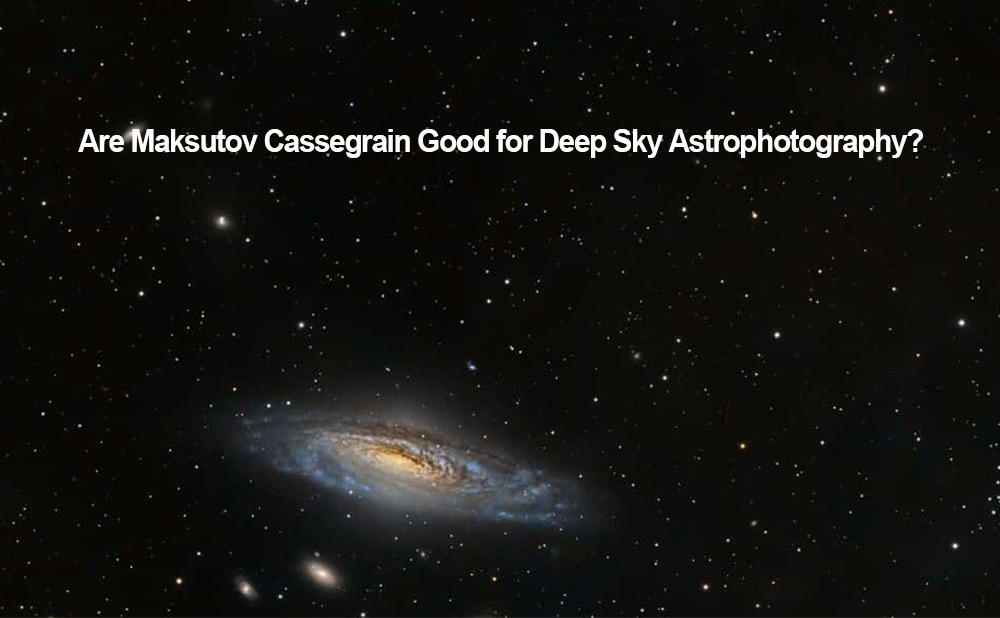Blog

Are Maksutov Cassegrain Good for Deep Sky Astrophotography?
If you've ever considered a Maksutov-Cassegrain (Mak) for deep sky astrophotography, you've likely hit a wall of questions: Their native focal ratios are usually f/12 or higher - so slow that capturing faint nebulae or star clusters means hours of exposure. Their narrow fields of view struggle to fit even deep sky targets. And large secondary mirror obstructions often wash out fine details in galaxies or nebulae. These flaws have boxed Maks into a single role: planetary and lunar viewing, not deep sky imaging.
0.65× Reducer
The biggest barrier to Mak deep sky imaging is speed - and the MK127 crushes it with a standard 0.65× dedicated reducer. Its native focal ratio is f/11.8, but with the reducer attached, it drops to f/7.8 - a dramatic improvement in light-gathering efficiency.
40% Faster Light Capture: An f/7.8 system is 40% more light-efficient than an f/11.8 one. No more staying up till dawn waiting for a single target.
Wider Field for Targets: The reducer also expands the field of view. With a 31mm eyepiece (for framing), you get ~1.5° of view - enough to fit the full Moon, the Pleiades (M45), or the core of the Orion Nebula (M42) in one shot. For astrophotography, this means you can capture compact deep sky objects (like planetary nebulae or small galaxies) without cropping heavily.
Dual-Role Flexibility: Remove the reducer, and the MK127 reverts to its native f/11.8 ratio - perfect for high-magnification planetary imaging (e.g., 166x with a 9mm eyepiece for Saturn's Cassini Division). No need for two telescopes: One tool handles both deep sky and planetary work.
Smaller Obstruction
Secondary mirror obstruction is another Mak Achilles'heel - too much obstruction softens edges and reduces contrast in deep sky shots. The MK127 keeps this in check with a 40.6mm secondary mirror, translating to just a 31% obstruction ratio (Far lower than the same level Mak).
Less obstruction means cleaner light paths - critical for capturing fine details like the spiral arms of a small galaxy or the filaments of a planetary nebula. To boost this further, the MK127 uses:
99% Dielectric Secondary Coating: Minimizes light loss (under 1%) and maintains color accuracy.
Multi-Coated Primary Mirror: Reduces reflections and glare, ensuring more light reaches your camera sensor. The result? Sharper, more vibrant deep sky images with less digital noise.
Lightweight & Pre-Calibrated
The entire MK127 lens weighs only 2.93kg and can be carried to the balcony with one hand.So you can head to a dark sky spot without struggling with heavy equipment.
More importantly, the optical axis has been calibrated before leaving the factory, so there is no need to calibrate the lens frequently like a Newtonian telescope.
Dual-Speed Focus
The MK127 comes standard with a dual-speed focuser, which is rare among mid-range maks.
So, Are Maks Good for Deep Sky Astrophotography?
Traditional Maks? Usually not - their slow speed and narrow fields make them inefficient. But the SVBONY MK127 proves that with design (a dedicated reducer, low obstruction, and high-quality coatings), Maks can be viable for deep sky work. It's not a replacement for a fast Newtonian or refractor (which excel at wide-field nebulae), but it's perfect for:
Compact deep sky targets (planetary nebulae, small galaxies, star clusters).
Observers who want one telescope for both planetary viewing and casual deep sky imaging.
Anyone who values portability.
In short: The MK127 doesn't just make Maks "good" for deep sky astrophotography - it makes them practical for the people who don't have the time, space, or budget for multiple telescopes.

There are no customer reviews yet . Leave a Reply !